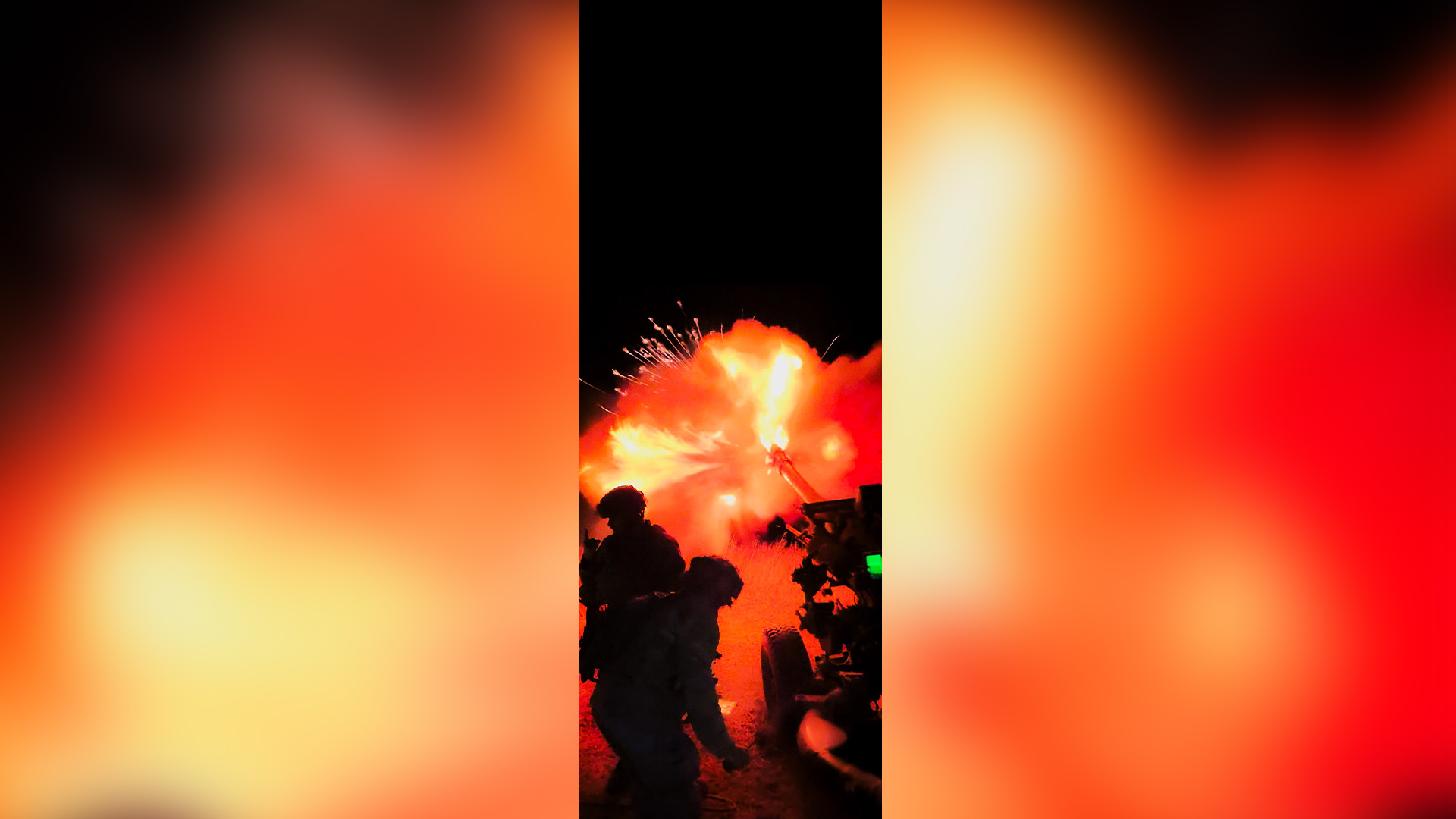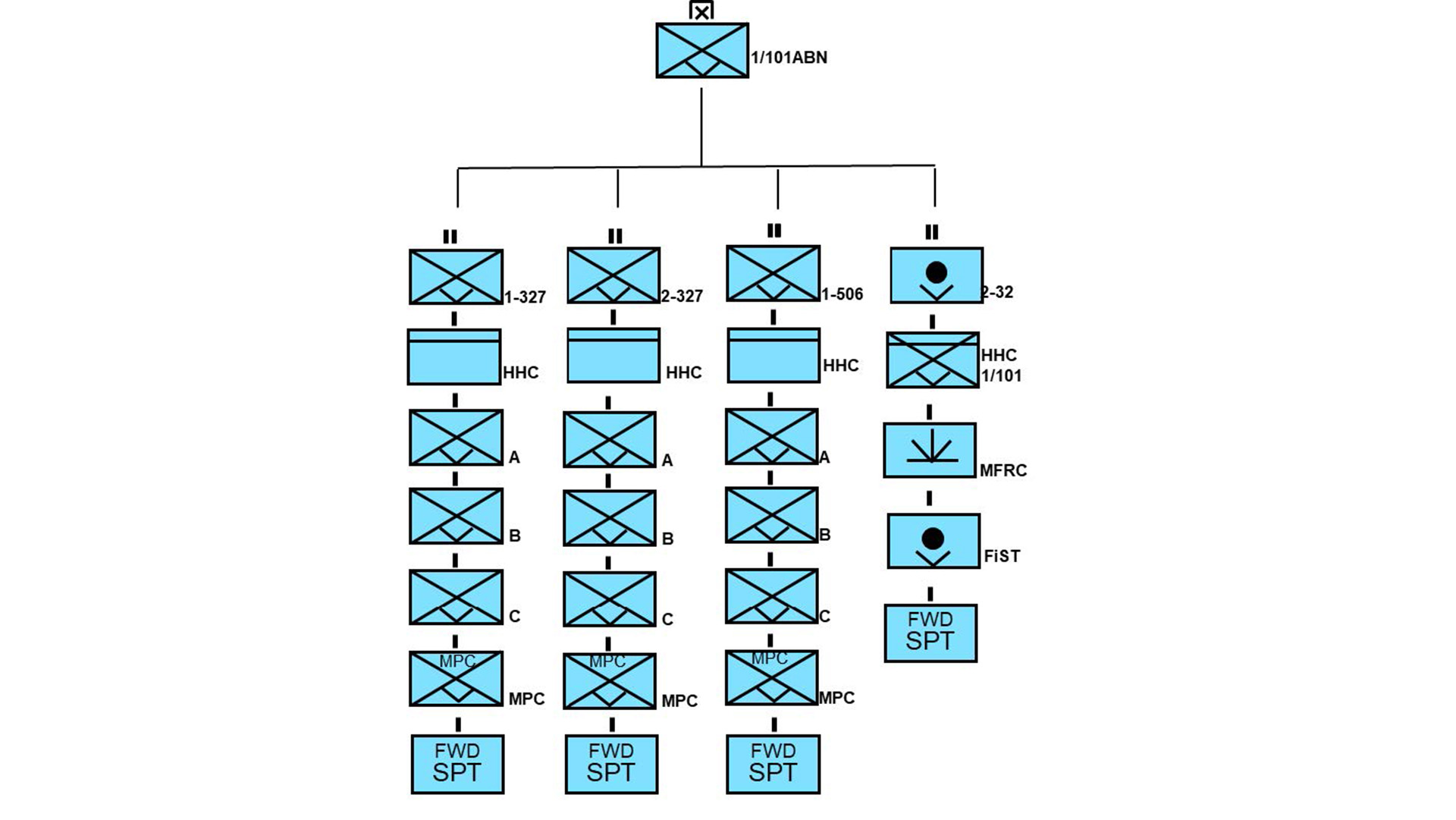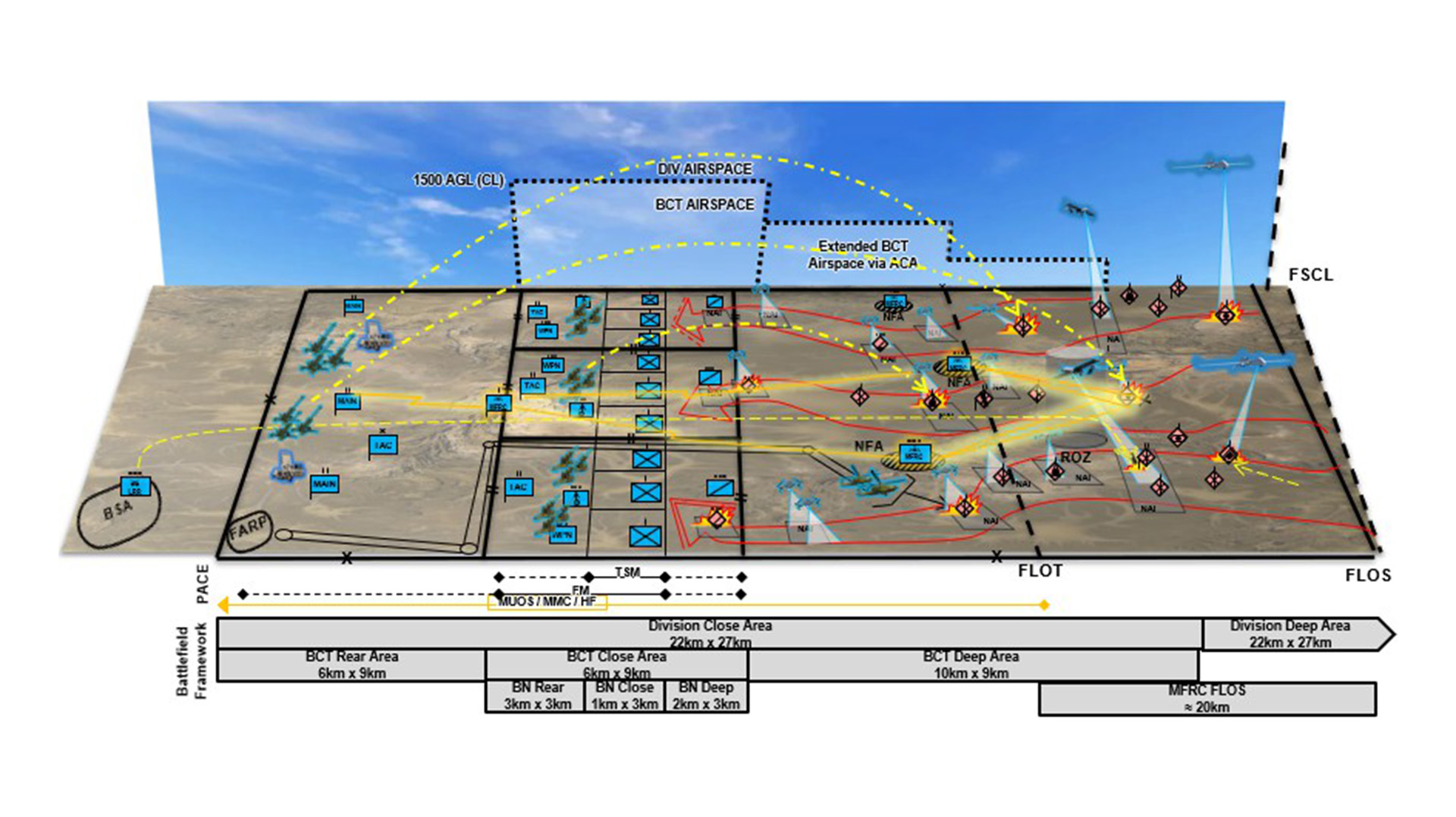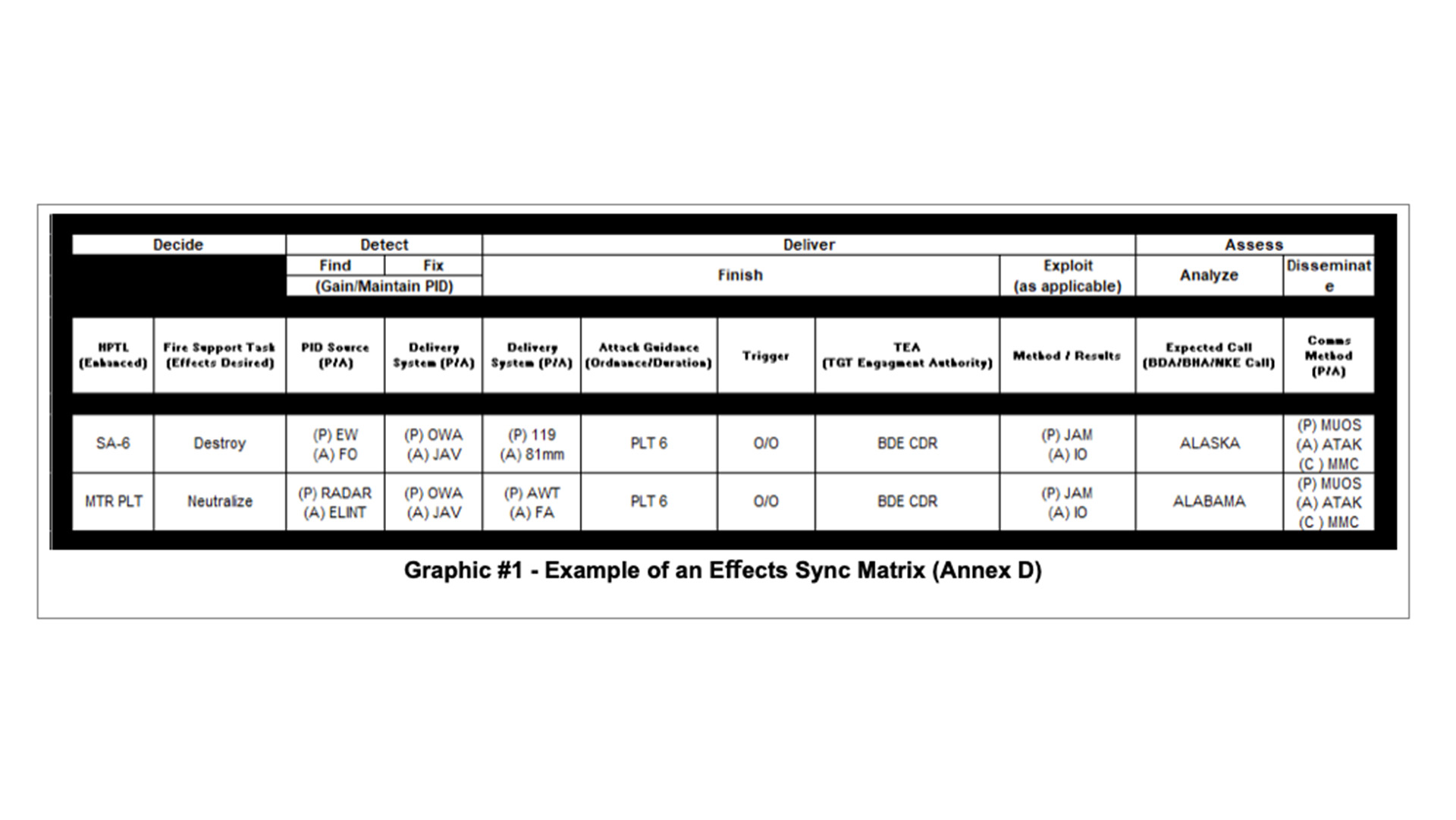On Mobile Brigade Combat Teams and Multi-Domain Operations
By MAJ Robert Anthony Stovall II
Article published on: March 27, 2025 in Field Artillery 2025 E-edition
Read Time: < 11 mins

B Battery, 2-32 FAR Firing a High Explosive Rocket-Assisted Projectile 105mm Artillery Shell
Abstract:
This paper discusses adapting an air assault capable brigade combat team to meet the challenges of Multi-Domain Operations (MDO) in post-modern warfare. It outlines proposed changes, addressing potential counterarguments and highlights the advantages of improving the brigade tactical combat team’s capabilities to excel in multi-domain environments.
Field Manual 3-0 introduced the brigade combat team (BCT) concept in 2001, defining it as an adaptable, self-sustaining combined arms organization with the capability to execute a broad spectrum of military operations. As of 2023, the BCT configuration has become the established standard for conventional Army forces, encompassing light, medium and heavy variations. The ever-evolving landscape of warfare, marked by a swift transition toward near-peer conflicts across multiple domains within the last five years, necessitates a comprehensive strategy for our Army combat brigades to secure victory in future battles.
The 1st Brigade Combat Team, 101st Airborne Division (Air Assault), identified a capability gap during Combined Resolve 19 from Oct. 22-31, 2023, at Hohenfels Training Area, Germany. The capability gap consisted in having an organic all-weather sensor with the ability to find and fix the enemy in the brigade area of operations.
Current capabilities demonstrate limitations particularly in adverse weather conditions. Mounted reconnaissance troops—though mobile—face constraints in complex terrain, while dismounted reconnaissance assets, such as scout teams and electronic warfare (EW) units, offer all-weather capabilities but are slow to deploy and have restricted observation ranges.
Anticipating future battles, we must prepare to sense and engage across multiple domains as our near-peer adversaries rapidly develop technology on par with the most advanced U.S. capabilities. These battles will frequently occur in areas where traditional kinetic effects may be limited or denied, demanding a synergistic approach of Multi-Domain Effects (MDE). Thus, the need for a Multi-Domain Effect Battalion (MDEB) is required at the BCT.
So, what does the MDEB bring to the fight? The MDEB directly addresses the existing capability gap within the BCT, serving as a hyper enabler to support ground forces. Recognizing when and where to synchronize kinetic and non-kinetic effects is as crucial as deploying troops at the right time and place. The MDEB assumes responsibility for orchestrating Multi-Domain Operations (MDO) and should remain actively engaged, even while stationed at home.

Graphic #2 – 1/101 ABN
To establish the MDEB, a reconfiguration of the Field Artillery battalion (FA BN) is necessary. This involves incorporating the brigade headquarters company into the FA BN. The optimal configuration places the brigade fire support coordinator (FSCOORD) in the role of Chief of Effects, responsible for the coordination of both kinetic and non-kinetic effects. This structural adjustment ensures effective synchronization and coordination at the brigade level. Any additional resources required should be requested through the division, drawing from supporting theater assets.
Current trends within the Army consist of reorganizing division artillery (DIVARTY) by consolidating all cannon artillery. This makes sense for many practical reasons such as standardizing employment and certification evaluations. Within the 101st Airborne Division (Air Assault), the BCTs have transitioned to mobile brigade combat teams (MBCTs) with the divestiture of its towed artillery, cavalry and engineer battalions. With the new MBCT construct, the MDEB should remain with MBCTs and consist of the multi-functional reconnaissance company, a forward observer company and the brigade headquarters. When the mission requires, then it should also include attached cannon artillery.
Expectations from the MBCT headquarters in Large-Scale Combat Operations (LSCO) should consist of defining risks, conducting feasibility assessments, requesting assets, identifying decision points, establishing an effects synchronization matrix and requesting delegated rules of engagement (ROE) authorities.
Similarly, the division headquarters plays a vital role by establishing the commander’s intent for each domain, outlining ROE for employment, authorizing or denying asset requests and facilitating the push of enablers down to the lowest supported unit. Close liaison within the joint force is essential, as every event presents an opportunity to engage adversaries in the soft domains. Delegating approvals for non-kinetic effects should be extended to brigade commanders for efficiency.
How does the MDEB fight? A critical task for a BCT is conducting shaping operations in the BCT deep. This requires coordinating sensors and integrating kinetic and non-kinetic effects to meet appropriate correlation of forces (COFs). This sets the conditions for the BN maneuver to fight and win. The process involves several key steps: find (tipping and cueing using EW sensors), fix (confirming targets with small unmanned aircraft systems (sUAS) and disrupting movement with one-way attack (OWA)), finish (using cannon artillery to finish targets), exploit (using additional OWA and information operations (IO) messaging to target rear vehicles and continue EW jamming), analyze (conducting battle damage assessments (BDAs) using sUAS and driving priority intelligence requirements (PIR)) and disseminate (passing the commander’s decision points via PACE). This complex process requires careful coordination and synchronization of assets to attrit the enemy to acceptable levels. However, it is important to remember that the enemy gets a vote, creating potential for a dynamic engagement area.
BCT in the Defense: Potential for a dynamic engagement area.
Find: Tipping and queuing using EW sensors organic to the brigade EW team. Single system employment provides a direction which is enough to begin to initiate a fix. Using EW assets won’t give a clear description of the target but will initiate the tactical targeting process.
Fix: Using sUAS to confirm the EW signature and then sending proportional OWA to disrup movement. The important part of using OWA is that they can target moving vehicles. Integration of EW attack by denying communications also needs to be triggered.

(Credit for this photo goes to MAJ Aaron Phillips and CPT Sheamus Kelly from Bastogne S2 1/101)
Finish: Once stalled into a static position, using cannon artillery to finish massing on the target.
Exploit: Using additional OWA in a precise manner on rear vehicles or other high value targets. Using IO messaging for mass dissemination, continued EW jamming targeting communications and sending dismounts for the continued destruction of enemy.
Analyze: Conducting BDA using sUAS. PIRs driving decision points.
Disseminate: Commander’s decision points passed via PACE.
Attack: The biggest difference is being able to use the latest satellite imagery.
Find: Using the latest imagery that is no older than 24 hours will be helpful for planning the attack.
Fix: Using sUAS to confirm the EW signature and then sending proportional OWA to disrupt movement. The important part of using OWA is that they can target moving vehicles. Integration of EW attack by denying communications also needs to be triggered.
Finish: Once stalled into a static position, using cannon artillery to finish massing on the target.
Exploit: Using additional OWA with precision on rear vehicles or other high value targets and using IO messaging for mass dissemination. EW jamming needs to continue targeting communications. The final form of exploitation includes sending dismounts for the continued destruction of remaining enemy.
Analyze: Conducting BDA using sUAS which informs the PIRs driving decision points.
Disseminate: Commander’s decision points passed via PACE.
The plan is easier to brief than it is to execute. Proper execution requires excellent flow of information, proper rehearsals and synchronization of assets.
Example of an Effects Sync Matrix (Annex D)
What else does the MDEB bring to the fight in an air assault division? An air assault division incorporates long-range, large-scale air assault operations (L2A2). Rotary wing travels from the forward staging base (FSB) to the target location and back. In contested areas, L2A2 are the greatest risk to force and mission. To reduce risk to acceptable levels, the MDEB planners must consider route selection, flight altitude, speed, timing, kinetic and non- kinetic effects. One of the greatest risk mitigation measures in LLAASLT is the fires planning process. The fires planning process in support of rotary wing operations always begins with intelligence and route planners. Fires officers within the MDEB must continually refine running estimates and coordinate and synchronize kinetic and non-kinetic effects. Throughout the process, decisions points will be discovered and help drive the decision matrix. The commander will establish their intent for employing fires in support of rotary wing operations.

Incorporating fires planners into the rotary wing planning process greatly improves the survivability of rotary wing operations.
Effective fires planning for rotary wing operations begins with intelligence gathering and flight route planning. Fire support officers (FSOs) must identify the current enemy air defense and ground order of battle, which serves as the foundation for building an initial target list worksheet. The process of resourcing imagery is initiated to support route planning and target analysis. Based on the gathered intelligence, FSOs advise the initial route that minimizes exposure to enemy threats while maximizing the effectiveness of fire support.
The next step involves refining running estimates. Fires officers establish or make recommendations regarding the commander’s intent for employing fires in support of rotary wing operations. They identify organic assets available and external assets available in support of the theater. They must gather key locations—such as helicopter landing zones (HLZ), Lager sites and targets, understand as well as disseminate ROE and update fire support coordination measures. Identifying facts, assumptions, constraints and restrictions, along with establishing information pathways for communication, is essential to an effective fire support plan. Furthermore, fires officers assess and identify risks to force and mission, ensuring that all enemy integrated air defense systems are considered.
The final stage in developing a comprehensive plan includes defining decision points, building a decision matrix and creating an effects synchronization matrix. FSOs nest the fires plan with the commander’s intent and develop an initial high payoff target list (HPTL). They identify desired effects, such as deny, neutralize and destroy, and develop an effects synchronization matrix based on previously defined vulnerability windows. FSOs request assets, synchronize with the battlespace owner, establish and update decision points and continuously update the threat model to ensure the safety of rotary wing assets during the operation.
Incorporating fires planners into the planning process greatly improves the survivability of rotary wing in L2A2 operations within contested areas. By following the outlined steps, FSOs can effectively plan and synchronize fires support to reduce risks to force and mission. Other fires plans should also include contingency planning: DART/BUMP/FARP protection/follow on operations.
Counterarguments do exist, suggesting that Multi-Domain Operations are primarily the purview of higher echelons beyond the BCT. Some contend that if the BCT is functioning effectively, then it should remain unchanged. Concerns about resource limitations and the practicality of this restructuring have also been raised. Additionally, the BCT is perceived by some as the pinnacle of post-modern combat effectiveness, and any substantial changes may disrupt its disciplined and initiative-driven approach to combined arms maneuver warfare.
Despite these counterarguments, it is crucial to address the evolving nature of warfare and the imperative to adapt to new challenges. Multi-Domain Operations are no longer confined to higher echelons; they permeate all levels of conflict. Our adversaries’ capabilities demand that we be equally versatile and responsive across multiple domains.
While the BCT has indeed proven its effectiveness, we must remain vigilant and open to improvements. The very essence of military strategy is continuous improvement and adaptation to meet new threats. The proposed restructuring, though demanding, is a testament to our commitment to maintaining a competitive edge.
Regarding resource constraints, the pursuit of this transformation should be seen as an investment in our future capabilities. As technology evolves, so too must our organizational structures and tactics. By reallocating existing resources and seeking support from higher commands when necessary, we can overcome many of these challenges.
The introduction of the MDEB into the MBCT framework is a forward-thinking approach to addressing the evolving nature of modern warfare. It aligns with the imperative to excel in MDO, adapt to near-peer threats and maintain our competitive edge. While there may be valid counterarguments, the need for agility and versatility in contemporary warfare underscores the importance of this transformative step. By embracing change and investing in our future capabilities, we can ensure that the BCT remains a potent force capable of prevailing in the complex battles of tomorrow.
Author
MAJ Robert Anthony Stovall II is the1/101 2-32 FAR BN XO. Former 160th SOAR FSO, Howard University APMS, SOTF, DA Secretariat recorder, 3CR Steel SQDN HHB CDR, 3CR Steel SQDN C BTRY, M777A2 CDR, Air Assault, Airborne, Ranger, USMA ’09 graduate.